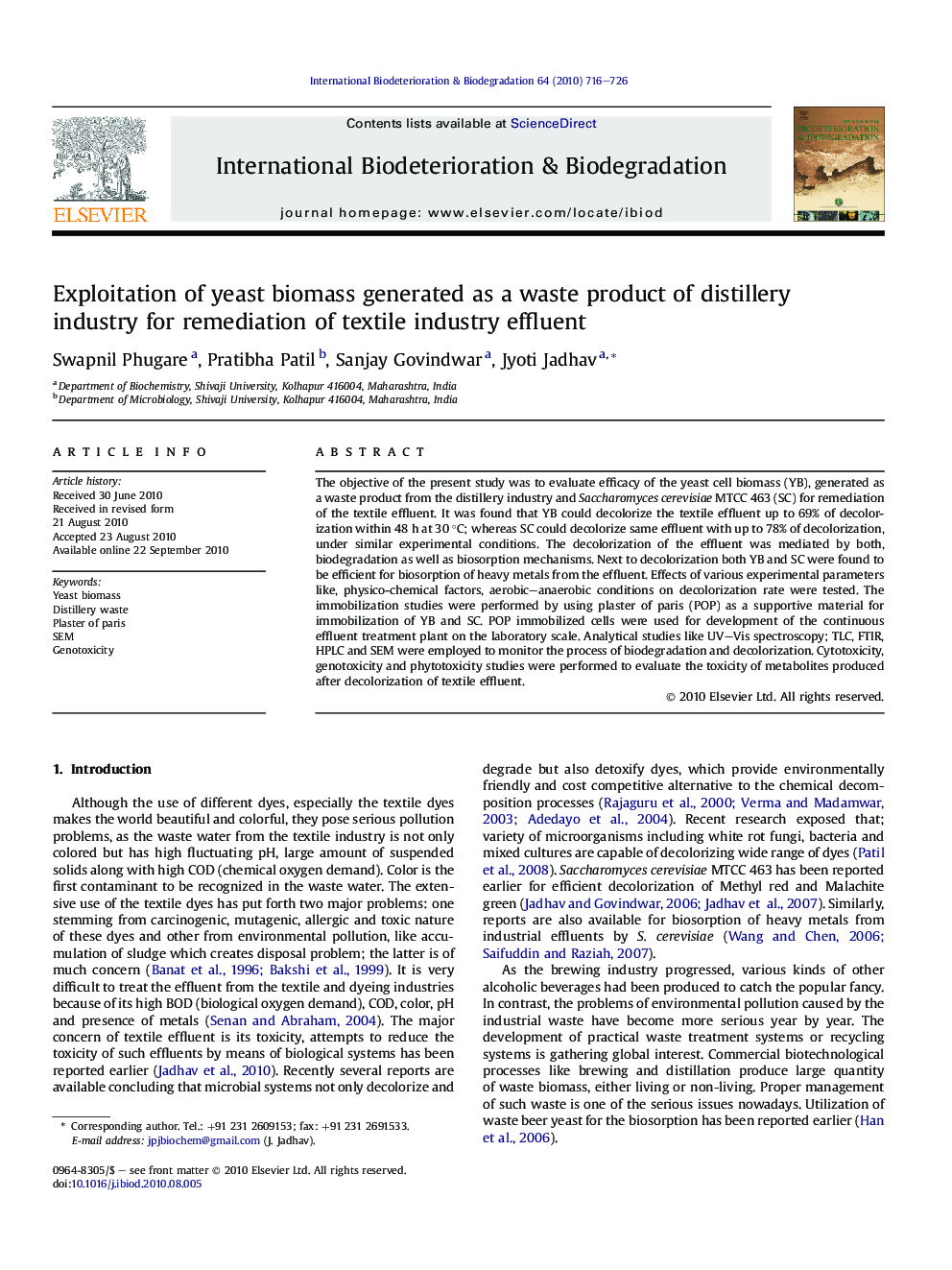| Article ID | Journal | Published Year | Pages | File Type |
|---|---|---|---|---|
| 4365389 | International Biodeterioration & Biodegradation | 2010 | 11 Pages |
Abstract
The objective of the present study was to evaluate efficacy of the yeast cell biomass (YB), generated as a waste product from the distillery industry and Saccharomyces cerevisiae MTCC 463 (SC) for remediation of the textile effluent. It was found that YB could decolorize the textile effluent up to 69% of decolorization within 48 h at 30 °C; whereas SC could decolorize same effluent with up to 78% of decolorization, under similar experimental conditions. The decolorization of the effluent was mediated by both, biodegradation as well as biosorption mechanisms. Next to decolorization both YB and SC were found to be efficient for biosorption of heavy metals from the effluent. Effects of various experimental parameters like, physico-chemical factors, aerobic-anaerobic conditions on decolorization rate were tested. The immobilization studies were performed by using plaster of paris (POP) as a supportive material for immobilization of YB and SC. POP immobilized cells were used for development of the continuous effluent treatment plant on the laboratory scale. Analytical studies like UV-Vis spectroscopy; TLC, FTIR, HPLC and SEM were employed to monitor the process of biodegradation and decolorization. Cytotoxicity, genotoxicity and phytotoxicity studies were performed to evaluate the toxicity of metabolites produced after decolorization of textile effluent.
Related Topics
Life Sciences
Environmental Science
Environmental Science (General)
Authors
Swapnil Phugare, Pratibha Patil, Sanjay Govindwar, Jyoti Jadhav,
